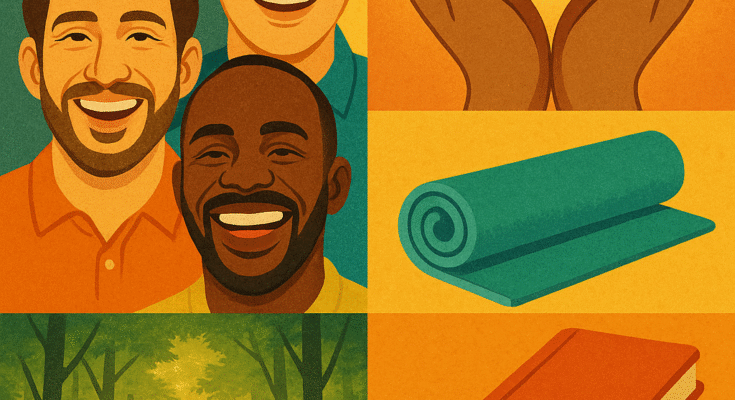The Science and Soul of Happiness: Unlocking Life’s Greatest Emotion
Happiness might seem as fleeting as sunlight on water, but beneath its shimmering surface lies a profound and universal quest. It’s more than fleeting joy or laughter—it’s a deep-rooted sense of contentment, resilience in the face of challenges, and the quiet thrill of living a life that feels meaningful. While its triggers vary wildly from person to person, happiness thrives on a few timeless pillars we can all nurture.
What Is Happiness, Really?
Happiness isn’t just a mood—it’s a mindset. It’s the quiet satisfaction of a life well-lived, the warmth of connection, and the courage to grow. It can flicker briefly in moments of triumph or glow steadily through habits that align with our values. Think of it as the emotional sweet spot between gratitude, purpose, and well-being.
The Pillars of Happiness: Where Does It Come From?
- The Warmth of Human Connection: Strong relationships with family and friends create a safety net of belonging. Love and laughter shared over coffee or a late-night call remind us we’re never truly alone.
- The Power of Gratitude: Focusing on life’s gifts—a sunset, a kind word, a warm meal—rewires the brain to spot positivity, even on tough days.
- The Thrill of Growth: Pursuing goals, mastering skills, and feeling progress ignite pride and confidence. Whether it’s learning guitar or acing a project, growth fuels joy.
- Body and Mind in Sync: Exercise, sleep, and nutritious food aren’t just health buzzwords—they’re mood boosters. A morning walk or yoga session can turn a gray day golden.
- The Ripple Effect of Kindness: Helping others isn’t just noble—it’s neuroscience. Acts of generosity, big or small, light up the brain’s reward centers like a fireworks show.
Can You Learn to Be Happier? Spoiler: Yes.
Happiness isn’t a genetic lottery or a stroke of luck. Science says 40% of it hinges on daily habits and perspectives—meaning you hold the keys to your own joy. Here’s how to unlock it:
- Gratitude Journaling: Write down three things you’re thankful for each day. Over time, this practice shifts your focus from “what’s missing” to “what’s abundant.”
- Mindfulness Magic: Meditation and deep breathing aren’t just trendy—they anchor you in the present, reducing anxiety about the past or future.
- Move Your Body: Exercise releases endorphins, nature’s mood enhancers. Dance, swim, or stroll—just get those feel-good chemicals flowing.
- Reframe Your Narrative: When negativity strikes, ask: “What’s another way to see this?” A canceled plan becomes free time; a setback becomes a lesson.
Happiness Around the Globe: A Cultural Tapestry
What brings joy in one culture might puzzle another. In Denmark, hygge (coziness) and social safety nets define happiness. In Japan, ikigai—a blend of purpose, community, and passion—fuels fulfillment. Meanwhile, many Arab cultures tie happiness to faith, family bonds, and gratitude. The U.S. often links it to personal ambition, while Finland, topping the World Happiness Report yearly, prizes work-life balance and trust in society.
The Money Myth: Yes, money matters—but only up to a point. It eases stress when covering basics, yet beyond a comfortable threshold, happiness plateaus. A millionaire and a teacher with strong relationships might share the same smile.
The Takeaway: Happiness Is a Daily Practice
Happiness isn’t a finish line—it’s the art of savoring the journey. It’s choosing gratitude over gripes, connection over comparison, and growth over stagnation. There’s no universal recipe, but every small step—a kind word, a deep breath, a moment of self-compassion—adds up. Start where you are. Joy isn’t hiding; it’s waiting to be noticed.


